
How to Use TCS230: Examples, Pinouts, and Specs
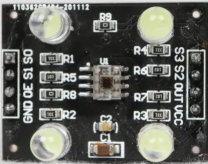
 Design with TCS230 in Cirkit Designer
Design with TCS230 in Cirkit DesignerIntroduction
The TCS230 is a programmable color light-to-frequency converter that combines configurable silicon photodiodes and a current-to-frequency converter on a single monolithic CMOS integrated circuit. This sensor allows for the detection and measurement of color in an easy and accurate manner. The TCS230's output is a square wave with a frequency directly proportional to the light intensity of the chosen color. Common applications include color sorting, ambient light sensing, color matching in printing, and backlight control in displays.
Explore Projects Built with TCS230
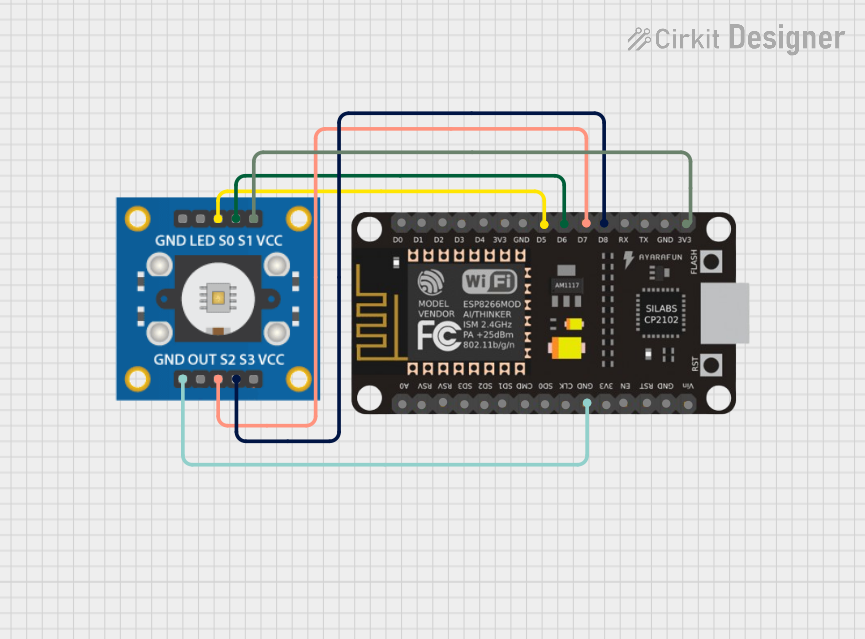
 Open Project in Cirkit Designer
Open Project in Cirkit Designer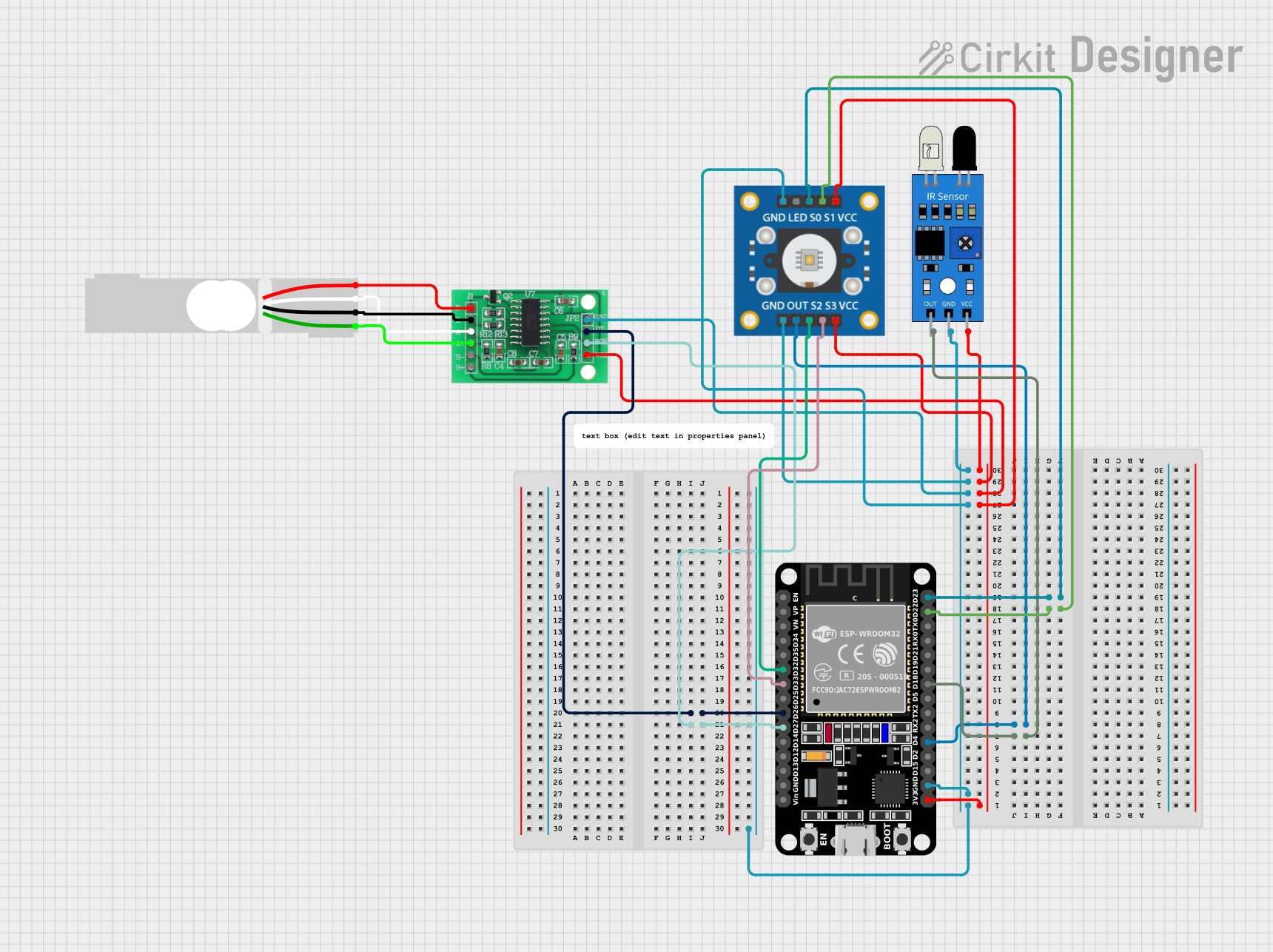
 Open Project in Cirkit Designer
Open Project in Cirkit Designer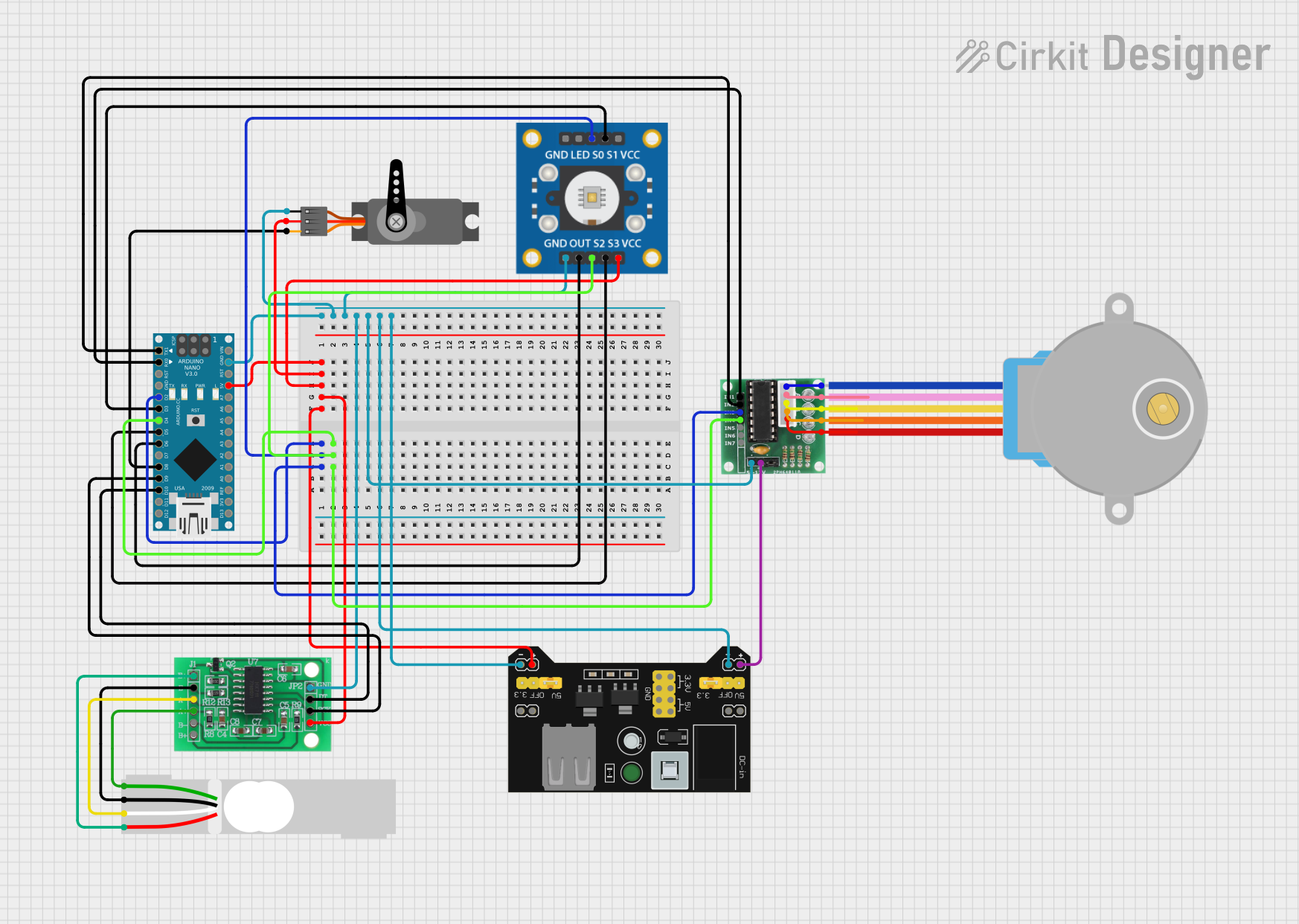
 Open Project in Cirkit Designer
Open Project in Cirkit Designer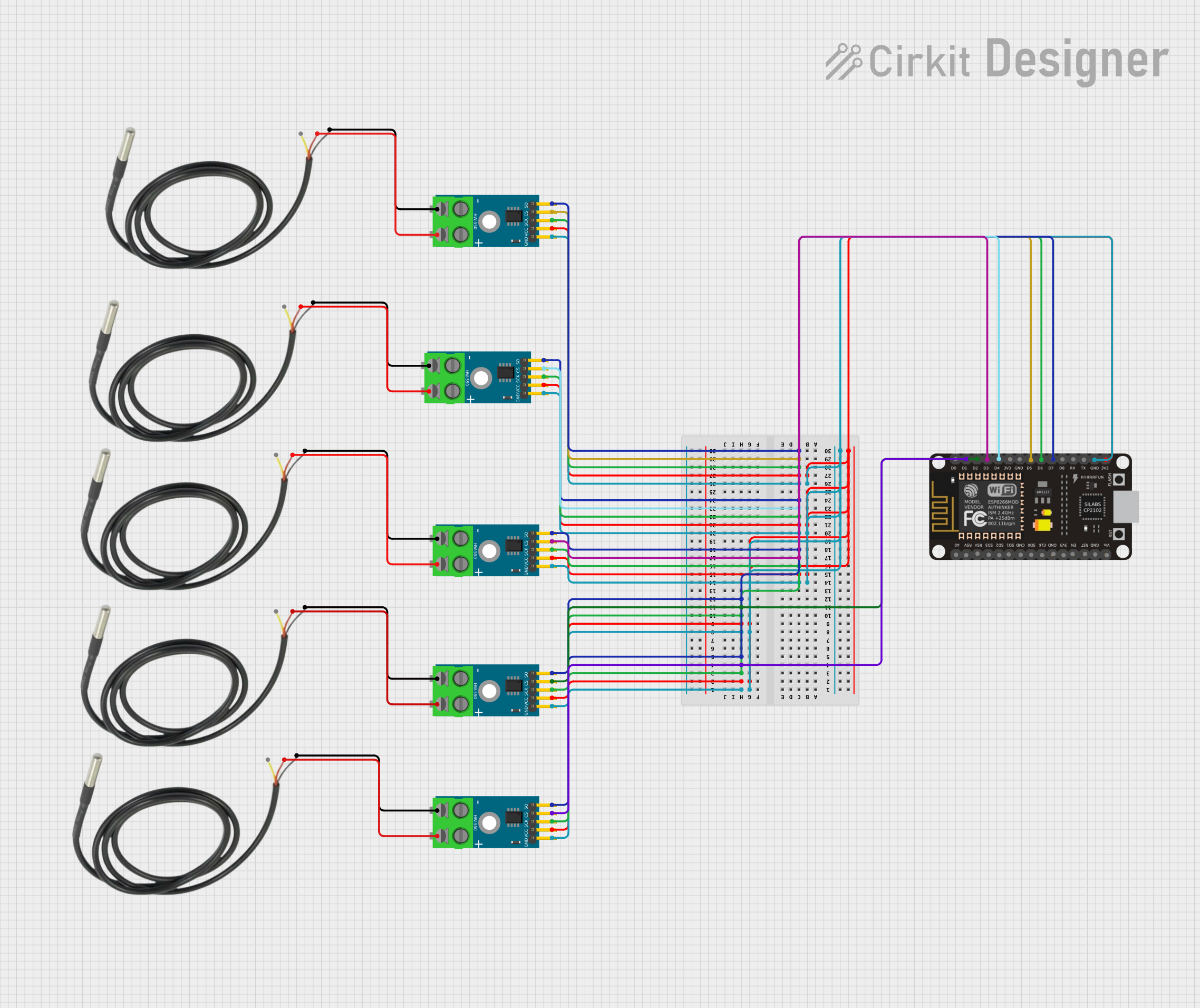
 Open Project in Cirkit Designer
Open Project in Cirkit DesignerExplore Projects Built with TCS230

 Open Project in Cirkit Designer
Open Project in Cirkit Designer
 Open Project in Cirkit Designer
Open Project in Cirkit Designer
 Open Project in Cirkit Designer
Open Project in Cirkit Designer
 Open Project in Cirkit Designer
Open Project in Cirkit DesignerTechnical Specifications
Key Technical Details
- Voltage Supply: 2.7V to 5.5V
- Output Frequency: Programmable from a few Hz to over 500 kHz
- Photodiode Array: 8x8 with filters for red, green, blue (RGB), and clear light
- Output Type: TTL square wave
- Response Time: 28ms (typical)
- Peak Sensitivity Wavelength: Red = 615nm, Green = 525nm, Blue = 465nm
Pin Configuration and Descriptions
| Pin Number | Pin Name | Description |
|---|---|---|
| 1 | OE | Output enable (active low) |
| 2 | GND | Ground connection |
| 3 | OUT | Output frequency |
| 4 | VDD | Supply voltage (2.7V to 5.5V) |
| 5 | S0 | Output frequency scaling selection inputs |
| 6 | S1 | Output frequency scaling selection inputs |
| 7 | S2 | Photodiode type selection inputs |
| 8 | S3 | Photodiode type selection inputs |
Usage Instructions
How to Use the TCS230 in a Circuit
- Powering the Device: Connect VDD to a 2.7V to 5.5V power supply and GND to the ground.
- Output Frequency Scaling: Set S0 and S1 to configure the scaling of the output frequency. This can be done by connecting these pins to either VDD or GND.
- Photodiode Type Selection: Use S2 and S3 to select the type of photodiode (red, green, blue, or clear) for the measurement.
- Output Enable: Connect OE to GND to enable the output frequency, or to VDD to disable it.
- Reading the Output: Connect the OUT pin to a digital input on a microcontroller to read the frequency.
Important Considerations and Best Practices
- Ensure that the power supply voltage does not exceed the maximum rating of 5.5V.
- Avoid exposing the sensor to direct sunlight or strong artificial light sources that could saturate the photodiodes.
- Use a frequency counter or a microcontroller capable of measuring frequency to read the output from the OUT pin.
- Calibrate the sensor for the specific application environment to achieve accurate color detection.
Example Code for Arduino UNO
// TCS230 Color Sensor Example for Arduino UNO
#include <FreqCount.h>
// Define sensor output and scaling pins
#define S0 4
#define S1 5
#define S2 6
#define S3 7
#define OUT 8
void setup() {
Serial.begin(9600); // Start serial communication
pinMode(S0, OUTPUT);
pinMode(S1, OUTPUT);
pinMode(S2, OUTPUT);
pinMode(S3, OUTPUT);
pinMode(OUT, INPUT);
// Set frequency scaling to 20%
digitalWrite(S0, HIGH);
digitalWrite(S1, LOW);
FreqCount.begin(1000); // Begin frequency counting over a 1-second period
}
void loop() {
if (FreqCount.available()) {
// Read frequency count
unsigned long count = FreqCount.read();
Serial.print("Frequency: ");
Serial.println(count);
}
}
Troubleshooting and FAQs
Common Issues
- Inaccurate Color Readings: Ensure that the sensor is properly calibrated and not exposed to strong light sources that could cause saturation.
- No Output Signal: Check the OE pin connection and ensure it is connected to GND. Also, verify that the power supply is within the specified range.
- Erratic Frequency Values: Ensure that there is no electrical noise affecting the sensor's output. Using shorter connections and proper grounding can help reduce noise.
Solutions and Tips for Troubleshooting
- Calibration: Perform a calibration with known color samples to adjust the readings for your specific environment.
- Shielding: Use a shield or cover to protect the sensor from external light sources that are not part of the measurement.
- Check Connections: Double-check all connections, especially the power supply and ground, for any loose wires or bad solder joints.
FAQs
Q: Can the TCS230 detect non-visible light? A: No, the TCS230 is designed to detect visible light in the red, green, and blue spectrum.
Q: How can I increase the measurement accuracy? A: Increase the frequency scaling factor for a higher resolution, but keep in mind that this will also slow down the measurement response time.
Q: What is the purpose of the clear photodiode? A: The clear photodiode allows for measuring the intensity of ambient light, which can be useful for calibrating the sensor against different light conditions.